Royal Catchfly - Silene regia
|
Silene regia - Royal Catchfly. Royal Catchfly - Silene regia is a plant of rocky prairies, glades, and open woods with attractive scarlet red flowers. It appears similar to Fire Pink - Silene virginica - but Silene regia has a much smaller distribution - 12 states, and in 6 of those states it is protected due to its rarity, having Rare, Endangered, or Threatened status. It is possible that it has no longer survived in Knox County, the only county in Tennessee where it was found. The photographs on this page were taken at what may be the only remaining site for Royal Catchfly in the state of Georgia - thanks to Alan Cressler for the information on this location.
The flowers are also somewhat similar to those of both Silene rotundifolia and Silene virginica, but Silene regia is a taller plant and the petals are much more shallowly notched, or perhaps not notched at all.
Two more scarlet Silene species occur west and south of the eastern scarlet species:
- Silene plankii - endemic to central New Mexico, a small area of a single county in the tip of western Texas, and into the Sierra del Carmen in Coahuila, Mexico.
- Silene laciniata (Cardinal Catchfly, Mexican Pink), which is large-flowered with deeply lobed petals. Various subspecies occur from western Texas through New Mexico and Arizona on to the cliffs of Santa Cruz Island of California, as well as in Mexico.
Found in:
AL, AR, FL, GA, IL, IN, KS, KY, MO, OH, OK, TN
Leave comments on Silene regia at this link. | 
Distribution of Silene regia in the United States and Canada:
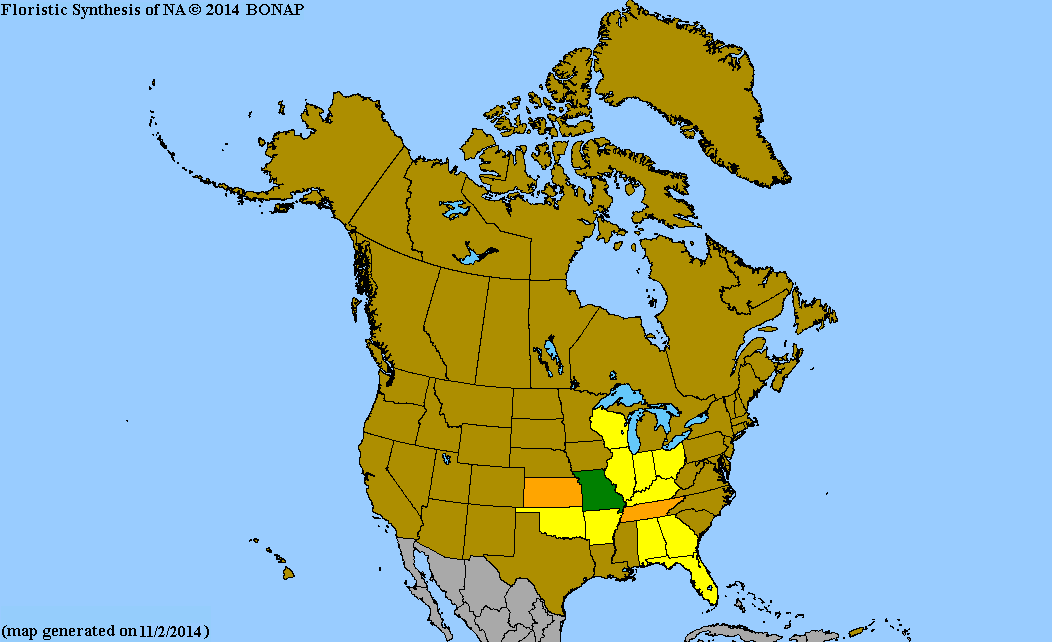
Map courtesy of The Biota of North America Program.
Map color key
Search Our Database: Enter any portion of the Scientific, Common Name, or both.
Do a general Google search of the entire site:
#ad
 Follow USWildflowers on Twitter
#ad
| | Site: Dade County, GA Date: 2013-August-04 | Photographer: Gerald C. Williamson
Nikon D7000
Tamron SP 90MM f/2.8 AF Macro | | The showy flowers have 5 crimson red petals that are each up to about an three quarters of an inch long. The tips of the petals are more frequently unnotched, but may, as in these photos, be slightly notched, unlike the similar Fire Pink and Roundleaf Catchfly, which are usually deeply notched. As is common to Silene, Royal Catchfly usually has 10 stamens, and 3 to 5. Both are strongly exserted. | | 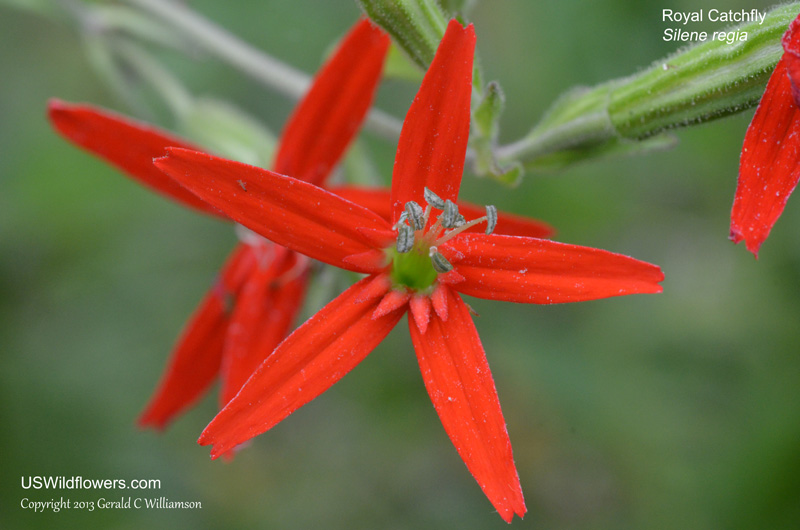
| | Site: Dade County, GA Date: 2013-August-04 | Photographer: Gerald C Williamson
Nikon D7000 | | The calyx of Royal Catchfly is covered with glandular hairs, especially on the 10 darker green, ridged veins. These glandular hairs, common to Silene species, result in the "catchfly" common name. There are two pointed appendages on each petal, which to me appear crown-like. I believe the "royal" part of the common name refers to the size of the plant relative to other Silene species, but I'd like to think this crown on the flower plays its part as well. | | Click on the photo for a larger image
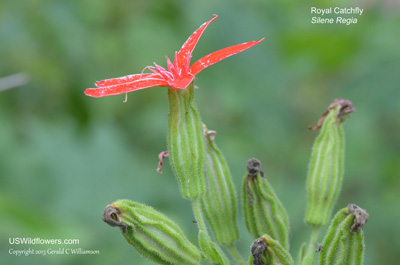
| | Site: Dade County, GA Date: 2013-August-04 | Photographer: Gerald C Williamson
Nikon D7000 | | Silene regia is one of the taller of the Catchfly species, growing up to 4 feet tall. It is usually unbranched below the inflorescence. While the stem may be glabrous or have short hairs on the lower part of the stem, it becomes quite glandular-hairy within the inflorescence. There are numerous showy flowers in the inflorescence, making this a quite striking plant. | | Click on the photo for a larger image
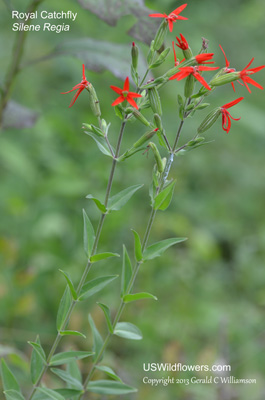
| | Site: Dade County, GA Date: 2013-August-04 | Photographer: Gerald C Williamson
Nikon D7000 | | Royal Catchfly grows in rocky prairies, rocky glades, and open forests. Here it shares habitat along a power line right of way in a limestone glade with a couple of Rudbeckia species. | | Click on the photo for a larger image
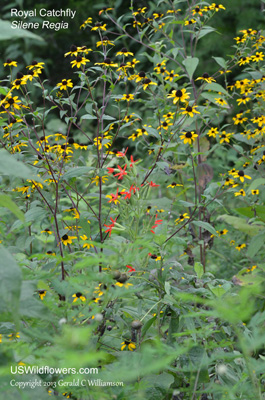
| | Site: Dade County, GA Date: 2013-August-04 | Photographer: Gerald C Williamson
Nikon D7000 | | The cauline (stem) leaves are opposite, sessile, and in 10 to 20 pairs. The margins are entire, and the surfaces are usually short-hairy, although rarely they may be glabrous. The leaves are ovate to lanceolate, up to 6 inches long, and generally 2 to 3 times as long as they are wide. | | Click on the photo for a larger image
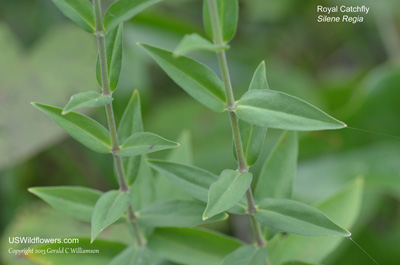
|
References used for identification and information:
|
|
| |
| #ad
|
|







